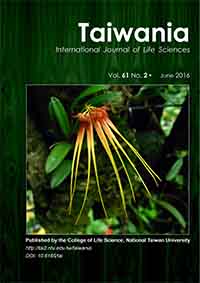Research Paper
Variation in woody plant species establishment according to nurse plant size in the South African grassland
Tomohiro Fujita and Chisato Yamashina
Published on: 04 June 2016
Page: 70 - 73
DOI: 10.6165/tai.2016.61.70
Abstract
The nurse plant effect has been highlighted in a large number of studies, especially in harsh ecosystems. This positive effect may vary with the size of the nurse plant. The present study examined the effects of nurse plant size and grass cover on the pattern of plant establishment in the South African grassland. We compared the number of woody plant seedlings beneath a putative nurse plant (Euclea crispa) with that in the adjacent grassland matrix, and measured the canopy area and heights of E. crispa and the proportions of grass cover. Factors affecting the abundance of woody seedlings beneath E. crispa stands were examined using a generalized linear mixed model (GLMM); Akaike’s information criterion was used to select the best-fit model. The best-supported model included tree height and the proportion of grass cover, but did not include canopy area. Tree height positively affected the number of seedlings, and the diaspores of most recorded species showed characteristics associated with dispersal by vertebrates. The GLMM also showed that the proportion of grass cover had a negative effect on the number of seedlings. These results suggest that E. crispa plants have positive effects on the establishment of woody plants in South African grasslands, likely by serving as perching structures for birds and providing less competitive microhabitats with a grass layer beneath their canopies.
Keyword: Africa, Facilitation, Nurse plant, Perch effect.


